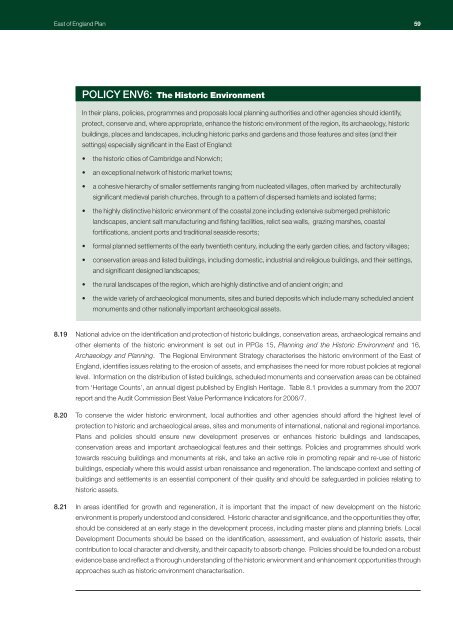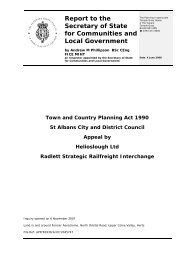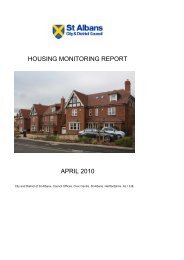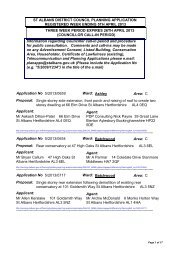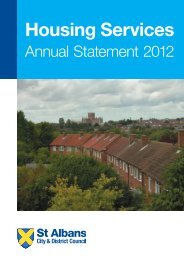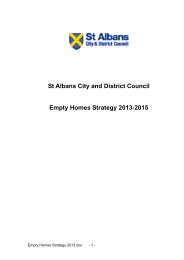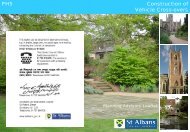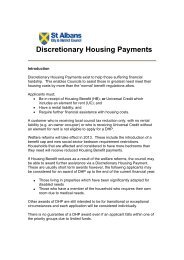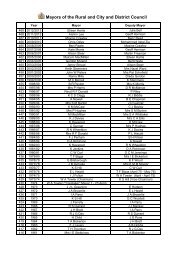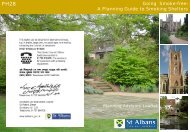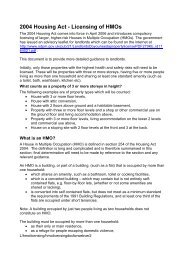RSS East Of England Plan - Broads Authority
RSS East Of England Plan - Broads Authority
RSS East Of England Plan - Broads Authority
Create successful ePaper yourself
Turn your PDF publications into a flip-book with our unique Google optimized e-Paper software.
<strong>East</strong> of <strong>England</strong> <strong>Plan</strong> 59<br />
POLICY ENV6: The Historic Environment<br />
In their plans, policies, programmes and proposals local planning authorities and other agencies should identify,<br />
protect, conserve and, where appropriate, enhance the historic environment of the region, its archaeology, historic<br />
buildings, places and landscapes, including historic parks and gardens and those features and sites (and their<br />
settings) especially significant in the <strong>East</strong> of <strong>England</strong>:<br />
• the historic cities of Cambridge and Norwich;<br />
• an exceptional network of historic market towns;<br />
• a cohesive hierarchy of smaller settlements ranging from nucleated villages, often marked by architecturally<br />
significant medieval parish churches, through to a pattern of dispersed hamlets and isolated farms;<br />
• the highly distinctive historic environment of the coastal zone including extensive submerged prehistoric<br />
landscapes, ancient salt manufacturing and fishing facilities, relict sea walls, grazing marshes, coastal<br />
fortifications, ancient ports and traditional seaside resorts;<br />
• formal planned settlements of the early twentieth century, including the early garden cities, and factory villages;<br />
• conservation areas and listed buildings, including domestic, industrial and religious buildings, and their settings,<br />
and significant designed landscapes;<br />
• the rural landscapes of the region, which are highly distinctive and of ancient origin; and<br />
• the wide variety of archaeological monuments, sites and buried deposits which include many scheduled ancient<br />
monuments and other nationally important archaeological assets.<br />
8.19 National advice on the identification and protection of historic buildings, conservation areas, archaeological remains and<br />
other elements of the historic environment is set out in PPGs 15, <strong>Plan</strong>ning and the Historic Environment and 16,<br />
Archaeology and <strong>Plan</strong>ning. The Regional Environment Strategy characterises the historic environment of the <strong>East</strong> of<br />
<strong>England</strong>, identifies issues relating to the erosion of assets, and emphasises the need for more robust policies at regional<br />
level. Information on the distribution of listed buildings, scheduled monuments and conservation areas can be obtained<br />
from ‘Heritage Counts’, an annual digest published by English Heritage. Table 8.1 provides a summary from the 2007<br />
report and the Audit Commission Best Value Performance Indicators for 2006/7.<br />
8.20 To conserve the wider historic environment, local authorities and other agencies should afford the highest level of<br />
protection to historic and archaeological areas, sites and monuments of international, national and regional importance.<br />
<strong>Plan</strong>s and policies should ensure new development preserves or enhances historic buildings and landscapes,<br />
conservation areas and important archaeological features and their settings. Policies and programmes should work<br />
towards rescuing buildings and monuments at risk, and take an active role in promoting repair and re-use of historic<br />
buildings, especially where this would assist urban renaissance and regeneration. The landscape context and setting of<br />
buildings and settlements is an essential component of their quality and should be safeguarded in policies relating to<br />
historic assets.<br />
8.21 In areas identified for growth and regeneration, it is important that the impact of new development on the historic<br />
environment is properly understood and considered. Historic character and significance, and the opportunities they offer,<br />
should be considered at an early stage in the development process, including master plans and planning briefs. Local<br />
Development Documents should be based on the identification, assessment, and evaluation of historic assets, their<br />
contribution to local character and diversity, and their capacity to absorb change. Policies should be founded on a robust<br />
evidence base and reflect a thorough understanding of the historic environment and enhancement opportunities through<br />
approaches such as historic environment characterisation.


